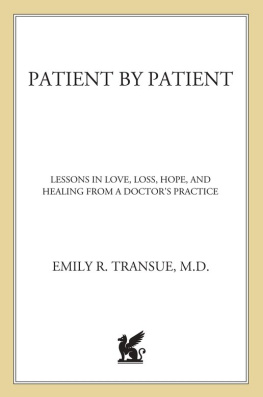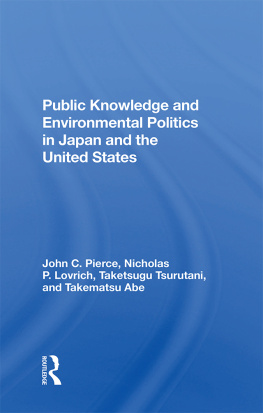
Incorporating Patient Knowledge in Japan and the UK
Since the turn of the millennium, the potential for patients knowledge to contribute to medical knowledge has been increasingly recognized by medical sociologists and anthropologists. Where previously such knowledge may have been written off as beliefs and assumed to be inaccurate when it contradicted established medical science, it is increasingly recognized that patientsespecially those with chronic conditionscan add a valuable perspective to the clinical knowledge of medical professionals. Sometimes this means working together to reassess treatment priorities, and at other times it may mean a patient-led movement to influence the direction of new research, based on patients experiences.
Ushiyama takes the case of eczema (atopic dermatitis) a chronic condition with a history of patient-led controversy over treatment methodsas a case study in how patient knowledge has come to affect change in medical practice. Comparing ethnographic fieldwork from Japan and the UK, she builds a complex picture of the differences in approach to treatment in light of attitudes to patients knowledge.
Miho Ushiyama is a lecturer at the Department of Human Relations, Faculty of Human Relations, Otsuma Womens University, Japan.
Routledge-WIAS Interdisciplinary Studies
Edited by Hideaki Miyajima and Kazuhisa Takemura, Waseda University, Japan
1 Corporate Crime in China
History and contemporary debates
Zhenjie Zhou
2 Why Policy Representation Matters
The consequences of ideological proximity between citizens and their governments
Willy Jou, Luigi Curini and Vincenzo Memoli
3 Electoral Survey Methodology
Insight from Japan on using computer assisted personal interviews
Edited by Masaru Kohno and Yoshitaka Nishizawa
4 Corpus Methodologies Explained
An empirical approach to translation studies
Edited by Meng Ji, Lidun Hareide, Defeng Li and Michael Oakes
5 Clans and Religion in Ancient Japan
The mythology of Mt. Miwa
Masanobu Suzuki
6 Clans and Genealogy in Ancient Japan
Legends of ancestor worship
Masanobu Suzuki
7 Incorporating Patient Knowledge in Japan and the UK
A study of Eczema and the Steroid Controversy
Miho Ushiyama
For the full list of book, please visit https://www.routledge.com/Routledge-WIAS-Interdisciplinary-Studies/book-series/WIAS01
First published 2020
by Routledge
2 Park Square, Milton Park, Abingdon, Oxon OX14 4RN
and by Routledge
52 Vanderbilt Avenue, New York, NY 10017
Routledge is an imprint of the Taylor & Francis Group, an informa business
2020 Miho Ushiyama
The right of Miho Ushiyama to be identified as author of this work has been asserted by her in accordance with sections 77 and 78 of the Copyright, Designs and Patents Act 1988.
All rights reserved. No part of this book may be reprinted or reproduced or utilised in any form or by any electronic, mechanical, or other means, now known or hereafter invented, including photocopying and recording, or in any information storage or retrieval system, without permission in writing from the publishers.
Trademark notice: Product or corporate names may be trademarks or registered trademarks, and are used only for identification and explanation without intent to infringe.
British Library Cataloguing-in-Publication Data
A catalogue record for this book is available from the British Library
Library of Congress Cataloging-in-Publication Data
A catalog record for this book has been requested
ISBN: 978-1-138-33907-1 (hbk)
ISBN: 978-0-429-44130-1 (ebk)
Typeset in Galliard
by codeMantra
To Matthew, Aki and Kazu
This book is a revised and extended version of my Japanese book, which was published by Shinysha in 2015, titled Steroid to Kanjya no Chi: Atopseihifuen no Ethnography (Steroids and Patient Knowledge: An Ethnography of Atopic Dermatitis).
The original reason I began investigating atopic dermatitis was simply because I also suffer from the disease, but as I delved further into it, I began to notice much deeper, far-reaching issues, including the conflict between doctors and patients surrounding treatment, problems concerning legitimacy in health care, and problems specific to Japan that become apparent when making comparisons with the UK. My outlook expanded the more I investigated, and this was one of the most rewarding aspects of completing this research.
This book looks at the problem of topical steroid side effects from the perspective of atopic dermatitis patients with particularly serious cases of the disease. Many atopic dermatitis patients have mild symptoms, so some readers may feel that there is some bias in the way the problems are presented in this book. However, a lot of research ultimately contains the authors subjectivity no matter how hard he or she may try to eliminate it. This book also reflects my personal experiences as someone who stopped using topical steroids, endured a relatively severe relapse, and eventually saw an improvement in my symptoms. If my symptoms had become unstable after discontinuing topical steroids, or if continuing to use topical steroids had allowed me to control my symptoms, I am sure this book would have been written very differently.
During the writing of this book, the situation of atopic dermatitis patients in English-speaking countries significantly changed. One of the main focuses of this book is an examination of the reasons why steroid withdrawal treatment, that is, stopping the use of steroids in order to cure atopic dermatitis, appeared in Japan but not in the UK, and this question was based on the fact that there was no steroid withdrawal treatment in the UK when I conducted fieldwork there between 2009 and 2012. However, after I left the UK, the situation changed, and steroid withdrawal treatment spread in the UK, like it has in other English-speaking countries. This trend started after the 2012 establishment of the International Topical Steroid Addiction Network (ITSAN) in the United States. ITSAN raises awareness of Red Skin Syndrome (RSS), which is another name for steroid withdrawal symptoms, and supports patients who withdraw from steroids. After this group was established, many patients in English-speaking countries started to become aware of the problems of RSS and steroid addiction and withdrawal, and the idea of steroid withdrawal treatment began to spread via social media, such as on blogs and Facebook.
Because steroid withdrawal treatment was not yet known in the UK when I conducted fieldwork there between 2009 and 2012, I assumed that steroid withdrawal treatment would be unlikely to spread in the UK while I was writing the manuscript of this book. However, the idea of steroid withdrawal treatment spread quickly through social media from 2012, and the situation in English-speaking countries became similar to that of Japan in the 1990s, when steroid withdrawal first started to spread there. This book thus illustrates the situation in the UK before steroid withdrawal treatment had spread and the situation in Japan after this treatment had spread. Some of my analysis might therefore be outdated when this book is published, but this is due to the rapidly changing situation in English-speaking countries.







